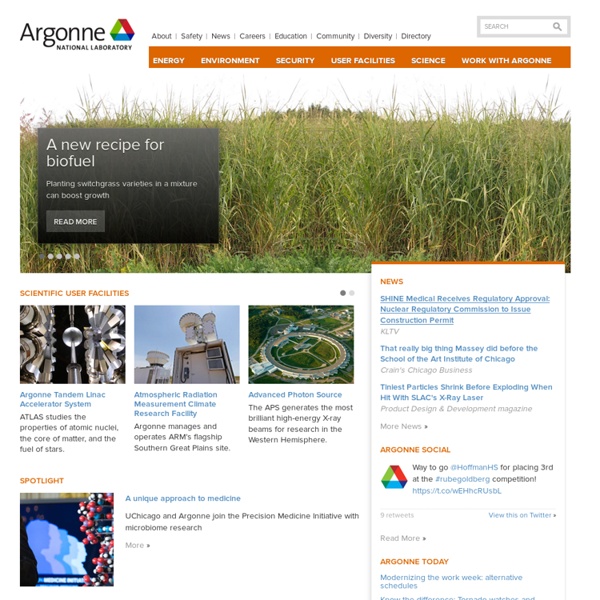



Resource nationalism tops EandY miners risk list | Metal Bulletin Copying and distributing are prohibited without permission of the publisher August 08, 2011 - 11:00 GMT Location: London KEYWORDS: Ernst & Young , mining. metals companies , metals , risk , resource nationalism , supply capacity constraints Ernst & Young has put resource nationalism at the top of its business risk list for mining and metals companies around the world, while supply capacity constraints continue to dominate the top ten rankings, in a report published on Monday The rapid spread of resource nationalism has seen it jump from number four in the 2010 rankings to top spot in E&Y's annual business risks listed in the Mining & Metals 2011-2012 report. "Resource nationalism is taking other forms as... All material subject to strictly enforced copyright laws. © Euromoney Institutional Investor PLC. Read the full article with a free trial
Pacific Northwest National Laboratory DSD :: Sustainable Development Topics :: Mining - Links Mining Minerals are essential for modern living, and mining is still the primary method of their extraction. To date, it appears that the main constraints to sustainability in the mining sector derive from the ever-increasing demand for mined resources, the consumption of resources (mostly energy and water) needed to extract and process metals, and the increasing pollution generated by the extraction process. This holds true for both large-scale, often multinational corporate, operations as well as for small-scale or artisanal ventures. Growth of Construction Minerals Extraction In the 20th century, the extraction of construction minerals grew by a factor of 34, while that of ores and industrial minerals by a factor of 27. Environmental, Social & Economic Impacts While the sustainability of extractive industries varies, these operations generally remain associated with a range of environmental and social impacts negatively affecting local communities. Maximizing Benefits & Sustainability
Tableau périodique des éléments Un article de Wikipédia, l'encyclopédie libre. Le tableau périodique des éléments, également appelé table de Mendeleïev, classification périodique des éléments (CPE) ou simplement tableau périodique, représente tous les éléments chimiques, ordonnés par numéro atomique croissant et organisés en fonction de leur configuration électronique, laquelle sous-tend leurs propriétés chimiques. Son invention est généralement attribuée au chimiste russe Dimitri Ivanovich Mendeleïev, qui construisit en 1869 une table différente de celle qu'on utilise aujourd'hui[N 1] mais similaire dans son principe, dont le grand intérêt était de proposer une classification systématique des éléments chimiques connus à l'époque en vue de souligner la périodicité de leurs propriétés chimiques, d'identifier les éléments qui restaient à découvrir, et même de pouvoir prédire les propriétés de ces éléments alors inconnus. Tableau périodique des éléments Tableau périodique des éléments destiné à l'impression au format A4
Video of the week: 'Material Marvels'- Yale prof explains materials science in about 3 minutes | Ceramic Tech Today November 9th, 2011 Published on November 9th, 2011 | Edited by: Eileen De Guire Ainissa Ramirez, associate professor at Yale and “science popularizer,” uses bathroom tiles to explain symmetry and five-fold quasicrystal symmetry. Credit: YouTube. Yale associate professor Ainissa Ramirez is a metallurgist, but we gotta love her, anyhow. This is her last year in the academic world, but she’ll still be teaching in her new career as a “science popularizer.” She’s got the chops for the job, too. There are four so far, each about three minutes long. Our favorite here at CTT is “Quasicrystals,” which is a timely follow-up to the recent awarding of the Nobel Prize to Daniel Shechtman for his discovery of five-fold quasicrystal symmetry. In an email she told us, “I have been an advocate of science education for over a decade, so I started this series on my own [without outside funding].” This career change is a natural extension of other things she’s been doing. Be sure to check out the videos.
Table de mendeleiev European Commission : Trade : Raw materials Raw materials are the basis of a large number of industrial value chains in the EU. Specific raw materials are needed to make a wide range of industrial goods such as car engines, mobile phones or wind turbines. EU raw materials' industry in a nutshell A large number of industries use raw materials as inputs, providing a total added value of €1300 billion. 30 million people employed in the raw materials' industrial sector A sustainable supply of particular raw materials is of crucial importance for the development of green technologies EU-Trade raw materials in figures (2011) EU Trade policy and raw materials Raw materials play a significant role for the EU trade policy. . , which further boosted the integration of raw material priorities in EU policies. EU Trade policy is actively committed to ensure that the international raw materials markets operate in a free and transparent way. Results on raw materials
European Commission : Trade : Non-ferrous metals Goods and services produced in the EU are traded around the globe but their trade can be affected by various aspects of trade policy, such as import tariffs, regulation or discrimination against foreign suppliers. When is a product a good or a service? Goods and services are increasingly linked together. For example, producers and exporters of textiles, cars or computers cannot be competitive without access to efficient banking, insurance, accountancy, telecom or transport system. The rise of cloud computing means that technical infrastructure, platforms and software are increasingly provided as services on a global basis. Why is it relevant? The EU is the world's biggest exporter of manufactured goods, and is a global market leader for high-quality products. The EU's market access strategy The European Commission works in close cooperation with Member States and business through the Market Access Strategy 1. The Partnership is made up of: 2. EU trade policy on goods and services